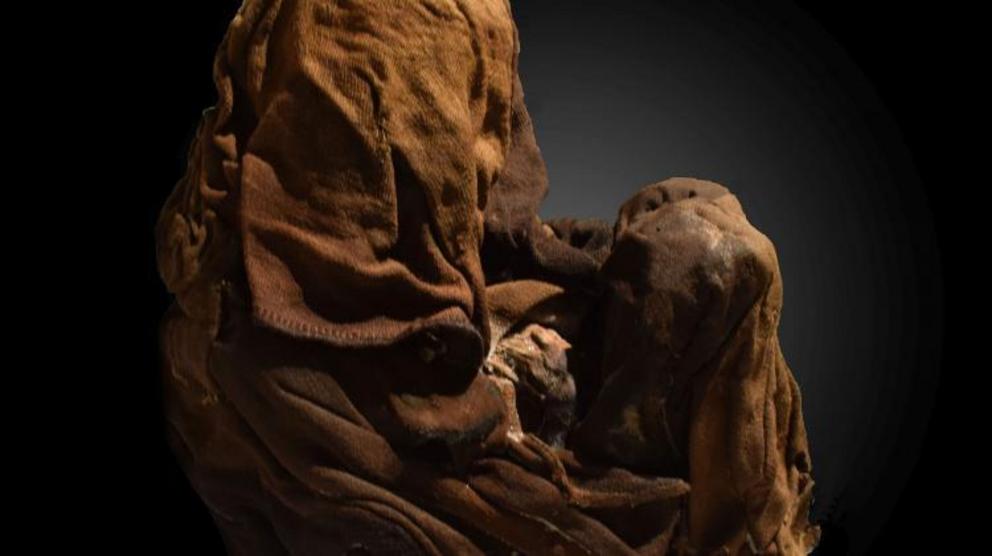Scientists: Inca child sacrifice victims came from all over the empire
The children sacrificed to the gods by the Incas on volcanoes could have come from different parts of the empire, say researchers who study Peruvian mummies, including bioarchaeologist from Poland.
Archaeologists know a dozen places in Peru, where about 500 years ago, on the tops of mountains or volcanoes, the Incas sacrificed children in the capacocha ritual. Dagmara Socha, a bioarchaeologist from the Center for Andean Studies of the University of Warsaw (CEAC) in Cuzco, has been studying these remains for several years as part of a project carried out jointly with Rudi Chavez Perea. He is the director of the Museo Santuarios Andinos of the Catholic University of Santa Maria in Arequipa (Peru).
This year, researchers focused on the remains of children laid on the tops of two volcanoes - Ampato and Pitchu Pitchu. Several decades ago, Dr. Johan Reihard found these remains, seated in stone platforms that looked like rectangular squares. They are currently kept in cold storage at Museo Sancturios Andinos. Some are very well preserved in the form of mummies.
According to Socha, the Incas believed that at the time of sacrifice the children would become intermediaries between gods and people. "The Incas considered the children pure and untouched; their status was supposed to facilitate persuading the gods to make specific decisions" - explains Socha.
Scientists still do not know what was the key to selecting children who were sacrificed. "They certainly had to have some exceptional traits, such as beauty or ancestry" - says Socha. In the case of one of the girls whose remains were found in a platform on Pichu Pichu, researchers noticed deliberate deformation of the head, which was elongated. It is known that this practice was used not in the mountains, but rather in the lowland, coastal part of the Inca empire. This may mean - the researcher suggests - that the girl was taken from a family living in a very distant region.
There is another argument to support this theory. On the girl`s teeth there are visible changes in the enamel structure, in the form of a line clearly distinguished from the rest of the teeth. Such traces occur in people who experienced hunger at some point in their lives. They can also form as a result of other reasons disrupting their development, for example very strong stress. In the case of the examined remains of the girl, it is known that this occurred around the age of three.
"I suppose it was then that the girl was taken away from her parents and brought to Cuzco, the capital of the Inca empire, where girl was being prepared for three years to be sacrificed at the top of the volcano" - says Socha.
Some of the remains of six children examined by Socha this year were mummified. But not all of them. Some remains are poorly preserved, and some have burn marks. Socha explains that the Incas erected sacrificial platforms in places exposed to lightning strikes. There are many indications that lightning would strike the platforms repeatedly. That is why soft tissues and clothes that children were wearing at the time of death have not survived to our times.
"According to the Incas, a person struck by lightning received great honour: a god expressed interest in that person" - she adds.
The concept of lightning strike is also supported by the fact that the soil around the remains was crystallized.
The mummies examined by Socha are now frozen (kept in a similar condition as at the time of discovery). Research did not involve unwrapping mummies - quite the opposite. Scientists strive to minimize interference in the remains. To determine their content, they used X-rays (radiography). Thanks to this, we know about numerous objects in the mummies: metal objects, including gold pins fastening robes, but also wooden ones, ritual cups. There were also other decorations, for example a gold tube or petals. Socha says that very similar objects are found at mummies discovered in Argentina. This means that the set of objects deposited with children was similar throughout the great Inca empire.


Photogrammetry and 3D modelling specialists Dominika Sieczkowska (CEAC UW) and Bartosz Chmielewski (Wrocław University of Science and Technology) created a three-dimensional photogrammetric model of mummy.
"The remains of children, including mummies, were taken out of refrigerators for a maximum of twenty minutes, after which they were returned to the cold storage. Thanks to the models, we can now make analyses in the comfort of the office" - she adds.
Next year, scientists plan to continue studying the remains of children. Taking tooth samples will allow to determine their diet and place of origin. This year`s work was financed by the Peruvian side.

